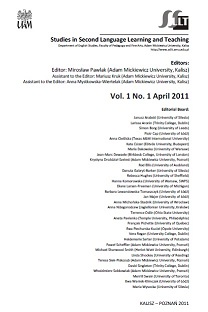Understanding CLIL as an innovation
Understanding CLIL as an innovation
Author(s): Richard Kiely Subject(s): Education
Published by: Wojskowe Biuro Historyczne im. gen. broni Kazimierza Sosnkowskiego
Keywords: CLIL; communication; cognition; language development
Summary/Abstract: Content and Language Integrated Learning (CLIL) initiatives in schools have become widespread across Europe and beyond in the last decade or so. Drivers for this include the role of English as the language of international economic activity, media and culture, belief in the value of early start and meaning-focussed instruction in foreign language learning, and a policy position which promotes a multilingual Europe. In many contexts, CLIL initiatives are local: teachers and educational leaders with assistance from teacher educators and experts in universities establish programmes, which are then shaped by available resources, human and material. While the commitment, enthusiasm and energy for CLIL at classroom and school levels are essential requirements for educational innovation, they may not, in the longer term be enough for sustainability and ongoing development. This paper examines the implementation of CLIL as an innovation and identifies some issues where wider policy support and coordination may be useful. It draws on the findings of an evaluation study of a CLIL project implemented in four countries, and identifies issues and ways forward for an effective strategy for CLIL in terms of foreign language learning, subject learning, and positive learning experiences for every child.
Journal: Studies in Second Language Learning and Teaching
- Issue Year: I/2011
- Issue No: 1
- Page Range: 153-171
- Page Count: 19
- Language: English

